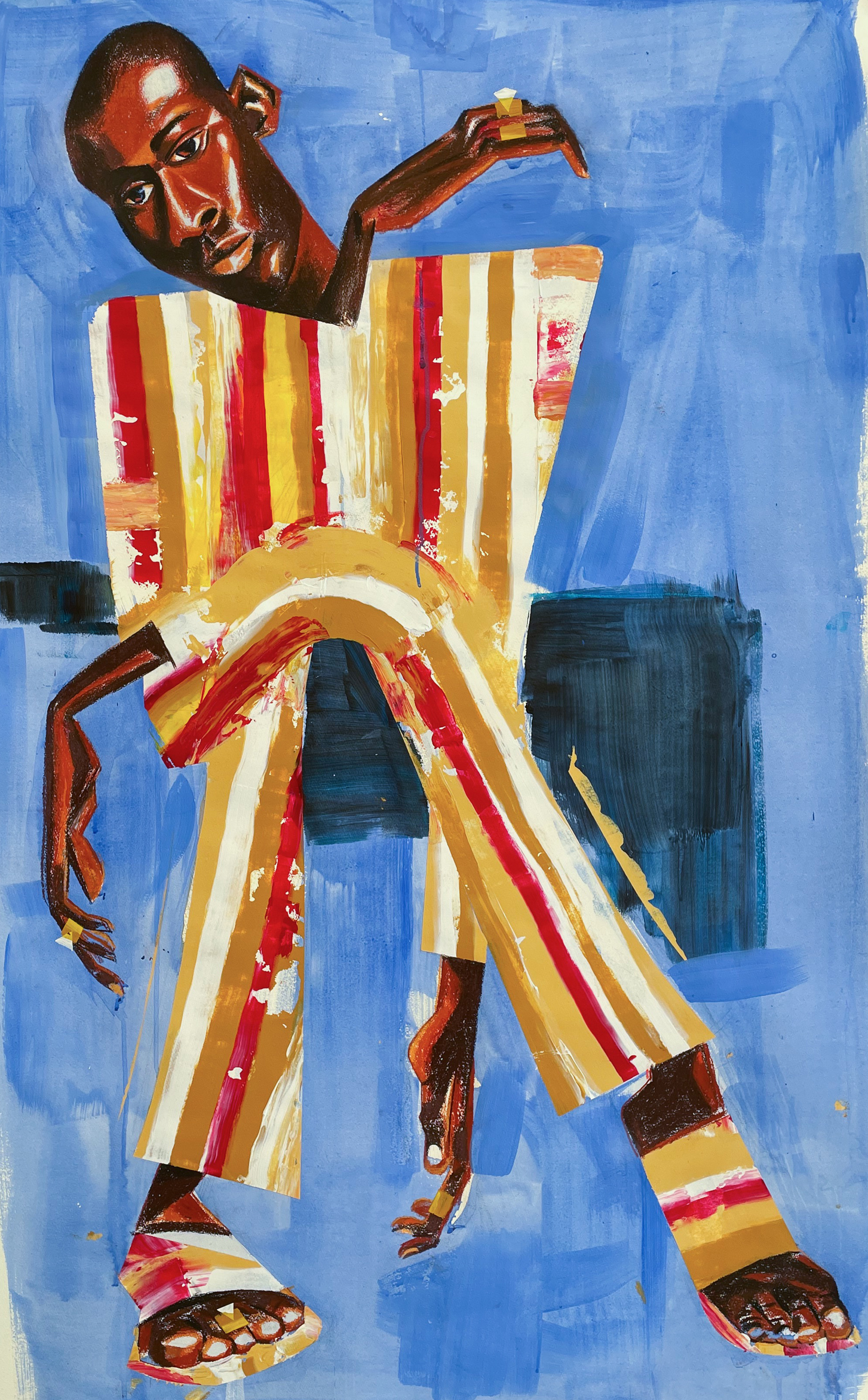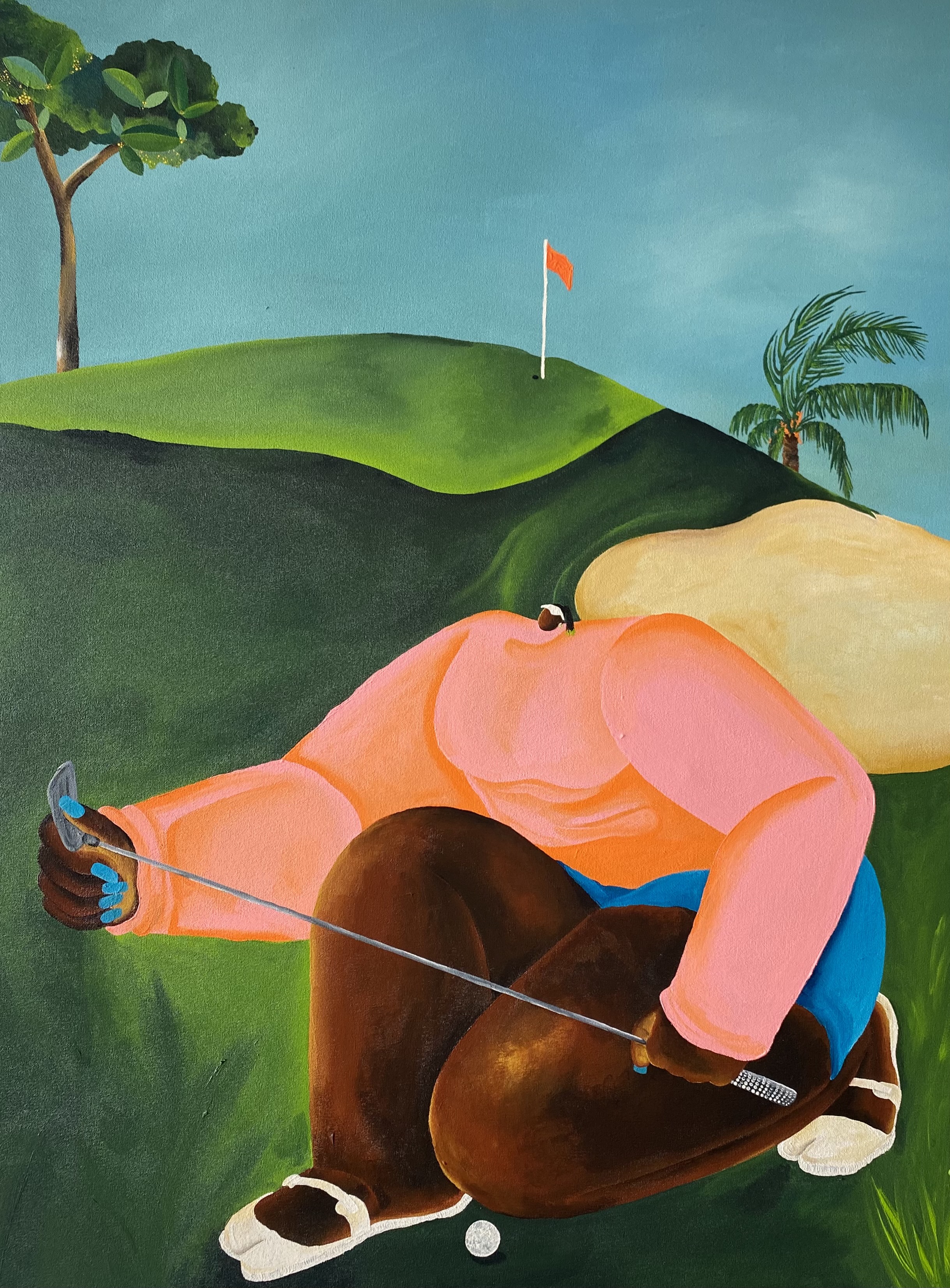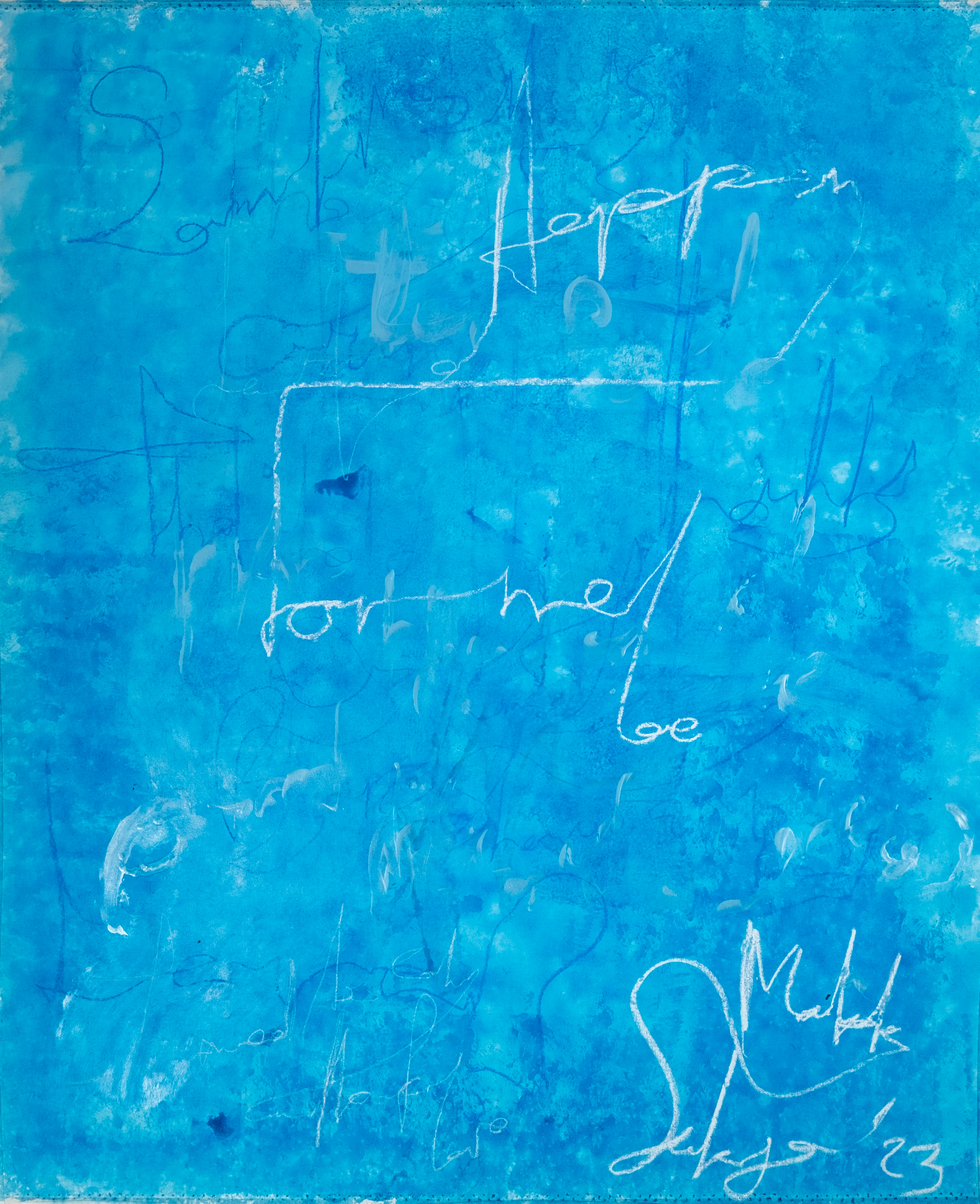An INDEX, A Library of Arts
- by Latitudes' Nkhensani Mkhari
-----------------

Terence Maluleke, Vertical Line, 2021, courtesy of the artist
Independent artistic practice is on the boom. Well, some would say it has been for a while now. Old structures are morphing into new porous forms. New gallery models such as Urbit, Instagram, and online platforms like Latitudes are shifting the landscape and the very ambience of how art is traditionally, and continues to be consumed, engaged, and experienced. This poses new opportunities and threats to the art market. In this flux, curators are compelled to evolve to continue the role of care and mediation as there is “a direct correlation between the discursive visibility of an artwork and its financial/cultural value” as this discursive visibility also “sustains the cultural value of artworks in museums and related institutions.” (1)
My curatorial practice is rooted in the process of shaping and creating new exhibition models and modes of mediation. A praxis that generates counteractive modes of experiencing art. Enter Index or Independent artists Exhibition, a new platform at this year's RMB Latitudes Art Fair. An index is a simple tool that serves to point to a fact or conclusion, thus a list of themes in a book ('pointing' to their position). An Index optimises information access, this renders an opportunity for “assembling artwork as data and is thus a supremely collaborative process.”

Bahati Simoens, Start The Way You Wanna Finish, 2023, courtesy of the artist, enquire
INDEX is a new platform to give exposure to independent artists, who often have to create their own networks and methods for getting their work seen by audiences. This is often cultivated through fostering relationships with curators, organisers, and other artists, as well as building an online presence through websites, social media, and various platforms. This exhibition is a reflection of this spirit; it speaks to the importance of cultivating connections outside traditional models of exhibition making and creating space for galleries and audiences to discover new artists.
The exhibition is divided into three themes, each part of the broader special projects theme of co-emergence. Exploring the intersection of various cultural and aesthetic influences on the creation and interpretation of art from Africa. This can include the blending of traditional and contemporary art forms, the incorporation of elements from different ethnic and regional cultures within Africa, and the impact of global perspectives and influences on African art.

Mankebe Seakgoe, The Heavens and Hell fought a great war for our union she thought, courtesy of the artist
The first theme is Reflections, and features contemporary photography and figurative paintings by artists like Jody Brand, Terrence Maluleke, Lebogang Mogul Mabusela, Thembinkosi Hlatshwayo, Jack Markovitz, Bahati Simoens, Ketumile Malesa, Samurai Farai and Thato Toeba amongst other luminaries. The theme explores figuration, portraiture, and unpacking the strange and wondrous landscape of the body(politic).
The second theme is titled Rest and, accordingly features contemporary sculptural pieces by Warren Maroon, Bulumko Mbete, Cazlynne Peffer, Gaelen Pinnock, Alexandra Naledi Holtman, and a host of hybrid 3D works by Tzung-Hui Lauren Lee, Raees Saieet, and a stellar art installation by Mankebe Seakgoe. The Rest theme explores the dialectic between space and rest, a sustained meditation on the latent tension between the forces of movement and stillness, action and inaction, or change and stability, encapsulated and expressed through sculptural form. The works are curated to evoke a sense of peacefulness and contemplation while also hinting at the underlying energy and dynamism that animate all forms of existence.

Terence Maluleke, The Guilt Of Eve, 2022, courtesy of the artist
The third and final theme is titled Dream and is devoted to contemporary painting ranging from abstract expressionism to landscape, neo-expressionist, and various other styles. The staging features the works of Thokozani Mthiyane, Yonela Makoba, Mankebe Seakgoe, Maja Maljevic, Lerato Lodi, and Benjamin Salvatore, among others. Painting is unlike photography in that it draws from a different mode of time, one that is more subjective and expressive than objective and documentary. While photography captures a single moment in time, frozen in a single frame, painting allows the artist to manipulate time and space to create a unique interpretation of reality. Paintings are where dreams are made.
This exhibition is more akin to a library of the arts, a resource, and an inclusive and intersectional record of contemporary artistic practice and cultural production. Hosting this exhibition at an art fair creates a space for independent artists to connect and establish themselves as important contributors to the contemporary art landscape, while also connecting with new audiences and collectors to discover, engage, and connect in a generous and cultivated manner.
Notes:
- Sylvester Okwunodu Ogbechie — The Curator as Culture Broker: A Critique of the Curatorial Regime of Okwui Enwezor in the Discourse of Contemporary African Art
Further Reading In Articles
African Artist Directory















